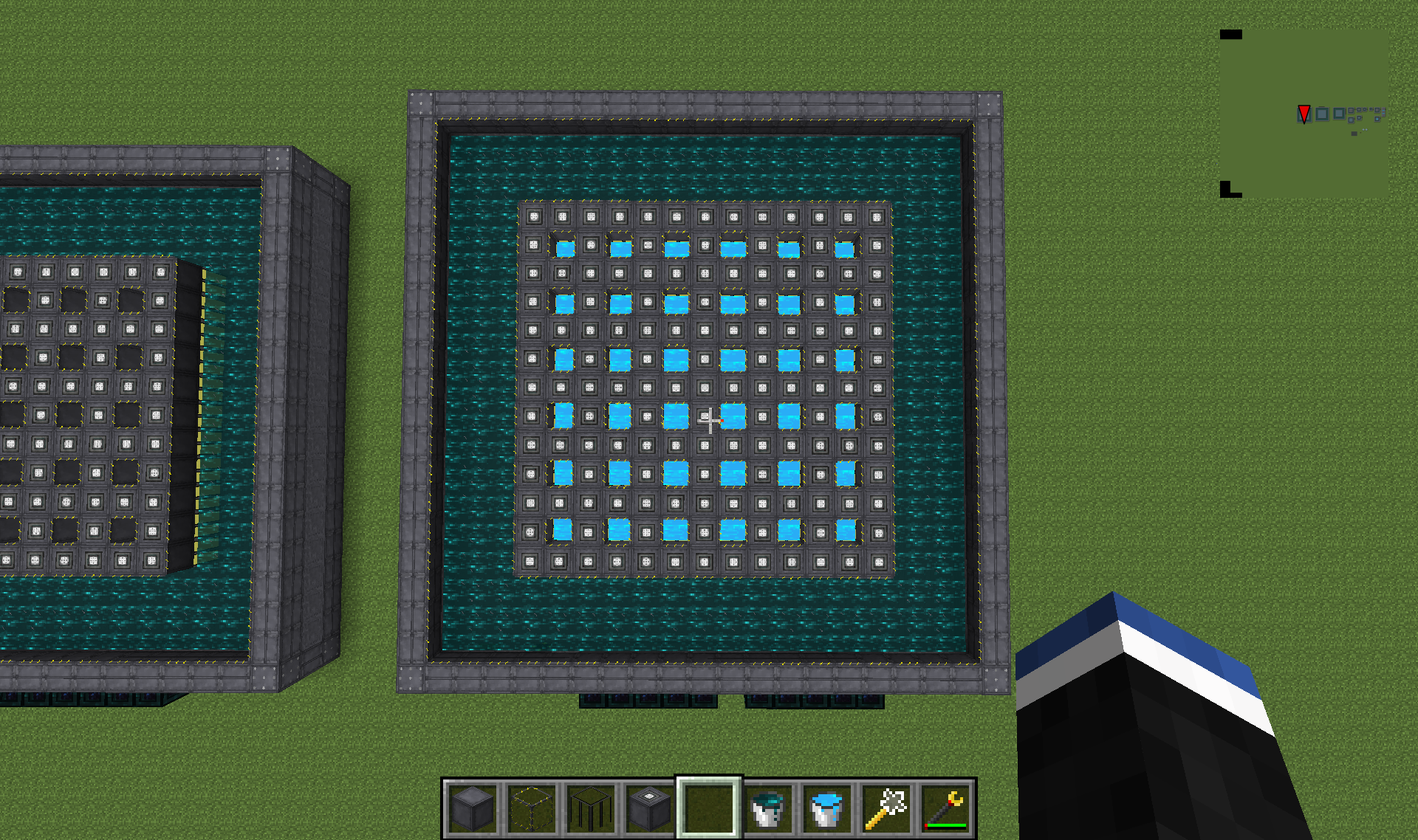There are two (known) factors governing a reactor cores effiency: Fertilization, and cooling. Above some critical fuel rod temperature, the hardness of the radiation will be high enough that the radiation will be unable to fertilize adjacent rods, and moderator blocks will be required. That temperature seems very high, as, as noted, we have both found that the best thing to have between to fuel rods, is another fuel rod

That said, the way heat is modeled in the reactor is interesting, particularly to passive reactor design as heat emission directly generates RF. But, heat can be conducted out of a fuel rod by an adjacent block of coolant (Given its heat conductivity). As such, if a fuel rod has no faces adjacent to coolant, it receives as much heat per tick as it emits, and consequently runs extremely hot.
As such, is appears possible in your design (I am at work and can't test it), to offset the rows of coolant blocks so they are not lined cardinally. This should expose alternating faces of fuel rods to coolant.
Something like this.
Code:
.xxxxxxxxx.
.x.x.x.x.x.
.xxxxxxxxx.
.xx.x.x.xx.
.xxxxxxxxx.
.x.x.x.x.x.
.xxxxxxxxx.
.xx.x.x.xx.
.xxxxxxxxx.
With that layout, it seems that every fuel rod has at least one face adjacent to coolant, but the overall fuel rod density has not changed, so, hopefully, the average path still fertilizes enough fuel rods.
I don't understand actively cooled reactors enough as it seems counter intuitive that lowering temperatures will produce *more* steam, but as I think that steam is principally produced by heat leaving fuel rods into the reactor environment, this tweak should have potential.

